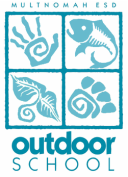Animals Field Study Curriculum Outline |
|
|
Field Study Tour: Animals • Plants • Soil • Water
Next Generation Science Standards: Animals • Plants • Soil • Water |
Theme: COMPLEXITY
|
Course Concept: ADAPTATION
Animals have characteristics that best suit them for a specific environment. |
Standards:
|
|
Course Concept: CHARACTERISTICS
All animals have specific features that make them unique. |
Standards:
|
|
Course Concept: NICHE
Animals perform specific ecological roles within their ecosystem. |
Standards:
|
|
Course Concept: HOMEOSTASIS
An ecosystem seeks balance, and that balance is affected by the population of particular species or the introduction of a new species. |
Standards:
|
Theme: ECOSYSTEMS
|
Course Concept: FLOW
Animals, water, soil and air produce flows within a corridor. |
Standards:
|
|
Course Concept: INTERACTIONS
An ecosystem is composed of complex interactions between animals, plants, water and soil. |
Standards:
|
|
Course Concept: COMMUNITY
Animals and plants occupy specific areas and function through interrelated trophic systems. |
Standards:
|
|
Course Concept: HABITAT
Animals require components of a natural environment including food, water, shelter and space. Humans are animals influenced by the same environmental factors that affect other living things. |
Standards:
|
Theme: IMPORTANCE
|
Course Concept: HUMAN DEPENDENCE
Individual and collective human behavior has profound and direct consequences on animal communities. |
Standards:
|
|
Course Concept: BIODIVERSITY
An ecosystem requires a variety of species to remain stable. |
Standards:
|
|
Course Concept: ENERGY FLOW
The flow of energy from the sun through plants to successively less numerous organisms. |
Standards:
|
|
Course Concept: RESILIENCE
Animals are able to survive a variety of environmental pressures. |
Standards:
|
|
Course Concept: CAREER
The study of animals offers a wide range of career opportunities. |
Standards:
|
Animals Field Study Activities
The following activities are typical of a day on Animals Field Study at Outdoor School. Actual activities will vary by site and season.
Nutrient Cycle / Decomposition: Students examine decomposition and study the means by which nutrients are cycled through an ecosystem.
Adaptations Activities: Students identify adaptations of animals and describe how those adaptations help animals survive in their habitats. They use measurement and observations to identify animals using reference materials such as field guides.
The most common activities:
Arthropod study: Students find and examine arthropods and discuss the role arthropods play in local ecosystems.
Food Web: Students demonstrate interrelationships among structures in an ecosystem.
Animal Signs Hike and Survey / Casting Animal Tracks: Students identify a wildlife-related question for inquiry and then survey the site for signs of wildlife and draw conclusions about presence and populations of animals.
Bear Game: Students use role-playing and simulation to explore concepts of carrying capacity and competition for food, water, shelter and space.
Oh Deer!: Students role play deer population cycles to discuss carrying capacity and wildlife population cycles.
Bird Observations: Students perform a bird population survey by counting and cataloging bird songs and observed birds.
Food Pyramid: Students study the numerical relations in a terrestrial food pyramid.
Deadly Links: Students actively simulate the process of bioaccumulation of toxins in a wildlife population. Debrief discussion explores how human choices affect animal populations.
The following activities are typical of a day on Animals Field Study at Outdoor School. Actual activities will vary by site and season.
Nutrient Cycle / Decomposition: Students examine decomposition and study the means by which nutrients are cycled through an ecosystem.
Adaptations Activities: Students identify adaptations of animals and describe how those adaptations help animals survive in their habitats. They use measurement and observations to identify animals using reference materials such as field guides.
The most common activities:
- Pelts
- Skulls
- Horns, Antlers and Hooves
- Birds
- Live Animal Stations
Arthropod study: Students find and examine arthropods and discuss the role arthropods play in local ecosystems.
Food Web: Students demonstrate interrelationships among structures in an ecosystem.
Animal Signs Hike and Survey / Casting Animal Tracks: Students identify a wildlife-related question for inquiry and then survey the site for signs of wildlife and draw conclusions about presence and populations of animals.
Bear Game: Students use role-playing and simulation to explore concepts of carrying capacity and competition for food, water, shelter and space.
Oh Deer!: Students role play deer population cycles to discuss carrying capacity and wildlife population cycles.
Bird Observations: Students perform a bird population survey by counting and cataloging bird songs and observed birds.
Food Pyramid: Students study the numerical relations in a terrestrial food pyramid.
Deadly Links: Students actively simulate the process of bioaccumulation of toxins in a wildlife population. Debrief discussion explores how human choices affect animal populations.


